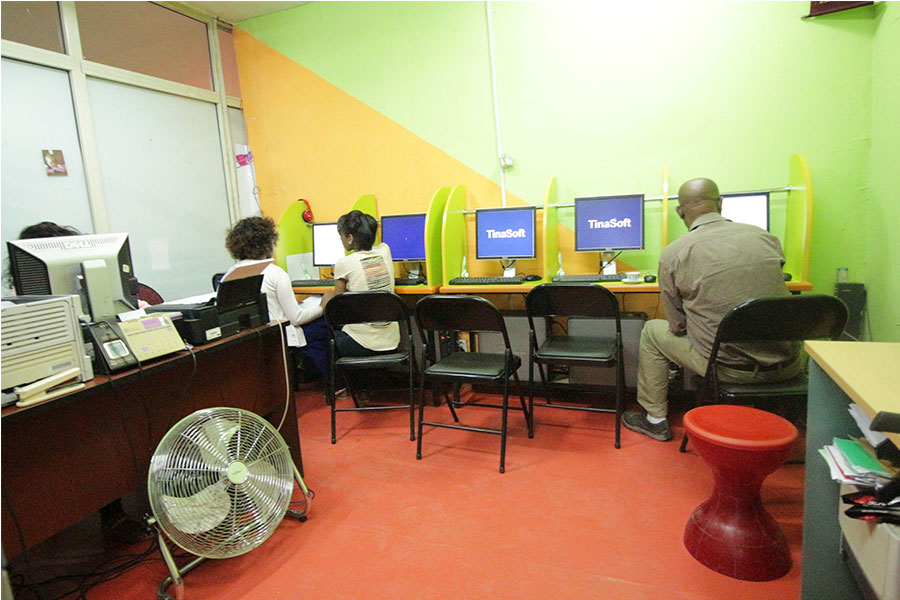
Radar | Jun 17,2023
Ethiopia is looking for six billion dollars in financing to bring universal electric access to the entire population in the coming six years.
With the recently launched second phase of the National Electrification Program, the government has set its eyes on completing universal electricity access by 2025.
The Program was launched at the East Africa Energy & Infrastructure Summit on March 27, 2019, at the Sheraton Addis Hotel. The event was attended by Seleshi Bekele (PhD), minister of Water, Irrigation & Electricity, and Shifarew Telila, CEO of Ethiopian Electric Utility.
A total of 3.2 billion dollars will be allocated for on-grid infrastructure, and over half of the financing is expected to be pooled from development partners and loans, according to Seleshi.
“Their budget will also be used for building the capacity of institutions,” he said.
The National Electrification Program focuses on integrated grid and off-grid electricity access. It provides an implementation framework for 35pc of off-grid access by 2025.
The Program was originally launched in 2017. The World Bank provided loans and grants worth 375 million dollars for the first phase of the program.
"We’re closely working on the distribution of power," said Shifarew.
By the end of the second edition of the Growth & Transformation Plan, Ethiopia had planned to increase its electric power generation capability to 17,000MW from its current capacity of 4,300MW.
Hydropower plants produce the largest share of electricity in the country currently, and studies show the nation could one day produce 45,000MW of power from this source, although less than nine percent has been utilised so far.
Private players in the energy sector are supportive of the program, including the two-decade-old Lydetco Plc, an engineering company engaged in the design, import and installation of commercial solar photovoltaic and solar thermal systems, as well as solar home systems.
"We have to create a good business environment if we want private companies to contribute to the off-grid projects," says Dereje Walelign, managing director of Lydetco.
By 2025, the Program plans to create 8.2 million new grid connections and bring power to six million new households through off-grid solar systems.
An expert applauds the priorities the Program has put in place for non-hydro sources of power.
Ethiopian Electric Power depends on hydro power, which is relatively costly compared with other alternatives, according to Tamiru Debela, a lecturer at Haramaya University's School of Electrical Engineering.
“We have to focus on other alternatives such as wind, solar and geothermal," Tamiru said.
PUBLISHED ON
Mar 30,2019 [ VOL
19 , NO
987]

Radar | Jun 17,2023

View From Arada | Feb 01,2020

Fortune News | Jan 19,2024

Radar | Feb 11,2023

Verbatim | Apr 13,2024

Radar | Apr 12,2020

Fortune News | Jun 15,2019

Editorial | Jan 01,2022

Editorial | Jun 04,2022

Fortune News | Oct 17,2020

Dec 22 , 2024 . By TIZITA SHEWAFERAW
Charged with transforming colossal state-owned enterprises into modern and competitiv...

Aug 18 , 2024 . By AKSAH ITALO
Although predictable Yonas Zerihun's job in the ride-hailing service is not immune to...

Jul 28 , 2024 . By TIZITA SHEWAFERAW
Unhabitual, perhaps too many, Samuel Gebreyohannes, 38, used to occasionally enjoy a couple of beers at breakfast. However, he recently swit...

Jul 13 , 2024 . By AKSAH ITALO
Investors who rely on tractors, trucks, and field vehicles for commuting, transporting commodities, and f...

Jul 12 , 2025
Political leaders and their policy advisors often promise great leaps forward, yet th...

Jul 5 , 2025
Six years ago, Ethiopia was the darling of international liberal commentators. A year...

Jun 28 , 2025
Meseret Damtie, the assertive auditor general, has never been shy about naming names...

Jun 21 , 2025
A well-worn adage says, “Budget is not destiny, but it is direction.” Examining t...